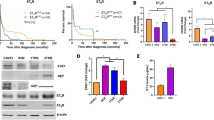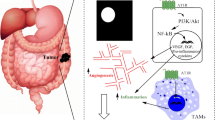Abstract
The aim of this study is to investigate the role of angiotensin-converting enzyme 2 (ACE2) in gallbladder cancer (GBC) and the therapeutic potential of angiotensin receptor blocker in GBC. Human gallbladder epithelial cells (HGBEC) together with GBC cells and tissue samples were used. In vitro studies were carried out to investigate the role of ACE2 in GBC cells. ACE2 levels were studied in in vivo GBC mouse models subject to ARB treatment. ACE2 level was decreased in GBC cells compared with that in normal gallbladder cells. Replenishment of angiotensin II (A2) promoted tumour cell growth, which could be mitigated by ACE2 supplement. ARB blocked A2-induced GBC cell growth and activated ERK. Activity of mTOR was not altered with different ACE2 status. ARB inhibited tumour growth in xenograft mouse models. In vivo study also showed that decreased expression of ACE2 was associated with enlarged tumour size. By genetic replenishment of ACE2 and pharmaceutical use of ARB, restored ACE2 level mitigated GBC growth. Our results supported the rationale for the use of ARB in GBC patients for potential therapeutic benefit.





Similar content being viewed by others
References
Zemour J, Marty M, Lapuyade B, Collet D, Chiche L. Gallbladder tumor and pseudotumor: diagnosis and management. J Visc Surg. 2014;151:289–300.
Tian YH, Ji X, Liu B, Yang GY, Meng XF, et al. Surgical treatment of incidental gallbladder cancer discovered during or following laparoscopic cholecystectomy. World J Surg. 2014
Muller BG, De Aretxabala X, Gonzalez Domingo M. A review of recent data in the treatment of gallbladder cancer: what we know, what we do, and what should be done. Am Soc Clin Oncol Educ Book. 2014;34:e165–70.
Javle M, Rashid A, Churi C, Kar S, Zuo M, et al. Molecular characterization of gallbladder cancer using somatic mutation profiling. Hum Pathol. 2014;45:701–8.
Nakai Y, Isayama H, Sasaki T, Takahara N, Saito K, et al. The inhibition of renin-angiotensin system in advanced pancreatic cancer: an exploratory analysis in 349 patients. J Cancer Res Clin Oncol. 2014. doi:10.1007/s00432-014-1873-2.
Namazi S, Sahebi E, Rostami-Yalmeh J, Jaberipour M, Razmkhah M, et al. Effect of angiotensin receptor blockade on prevention and reversion of tamoxifen-resistant phenotype in MCF-7 cells. Tumour Biol. 2014. doi:10.1007/s13277-014-2713-3.
Dougherty U, Mustafi R, Sadiq F, Almoghrabi A, Mustafi D, et al. The Renin-Angiotensin system mediates EGF receptor-vitamin d receptor cross-talk in colitis-associated colon cancer. Clin Cancer Res. 2014;20:5848–59.
Srivastava K, Srivastava A, Mittal B. Angiotensin I-converting enzyme insertion/deletion polymorphism and increased risk of gall bladder cancer in women. DNA Cell Biol. 2010;29:417–22.
Li J, Yang ZL, Ren X, Zou Q, Yuan Y, et al. ACE2 and FZD1 are prognosis markers in squamous cell/adenosquamous carcinoma and adenocarcinoma of gallbladder. J Mol Histol. 2014;45:47–57.
Cui L, Xie R, Dang S, Zhang Q, Mao S, et al. NOV promoted the growth and migration of pancreatic cancer cells. Tumour Biol. 2013;35(4):3195–201. doi:10.1007/s13277-013-1418-3.
Zong H, Yin B, Zhou H, Cai D, Ma B, et al. Inhibition of mTOR pathway attenuates migration and invasion of gallbladder cancer via EMT inhibition. Mol Biol Rep. 2014;41:4507–12.
Ding G, Feng C, Jiang H, Ding Q, Zhang L, et al. Combination of rapamycin, CI-1040, and 17-AAG inhibits metastatic capacity of prostate cancer via Slug inhibition. PLoS One. 2013;8:e77400.
Grzegrzolka J, Swiatko K, Pula B, Zamirska A, Olbromski M, et al. ACE and ACE2 expression in normal and malignant skin lesions. Folia Histochem Cytobiol. 2013;51:232–8.
Qian YR, Guo Y, Wan HY, Fan L, Feng Y, et al. Angiotensin-converting enzyme 2 attenuates the metastasis of non-small cell lung cancer through inhibition of epithelial-mesenchymal transition. Oncol Rep. 2013;29:2408–14.
Hao Q, Chen X, Wang X, Dong B, Yang C. Curcumin attenuates angiotensin II-induced abdominal aortic aneurysm by inhibition of inflammatory response and ERK signaling pathways. Evid Based Complement Alternat Med. 2014;2014:270930.
Montrezor LH, Piccinato CA, Collares CV, Vireque AA, Silva AA. Effects of angiotensin II, atrial natriuretic peptide and endothelin-1 on proliferation and steroidogenic output of bovine granulosa cells cultured in a chemically defined system. Anim Reprod Sci. 2014;152:8–16. doi:10.1016/j.anireprosci.2014.11.013.
Kim-Mitsuyama S, Ogawa H, Matsui K, Jinnouchi T, Jinnouchi H, et al. Differential effectiveness of ARB plus CCB therapy and high-dose ARB therapy in high-risk elderly hypertensive patients: subanalysis of the OSCAR study. Hypertens Res. 2014. doi:10.1038/hr.2014.164.
Wang L, Dong T, Liu B, Zhao X, Chen J, et al. Contribution of the renin-angiotensin system in chronic foot-shock induced hypertension in rats. Life Sci. 2014;121:135–44.
Ferrao FM, Lara LS, Lowe J. Renin-angiotensin system in the kidney: what is new? World J Nephrol. 2014;3:64–76.
Luchman HA, Stechishin OD, Nguyen SA, Lun XQ, Cairncross JG, et al. Dual mTORC1/2 blockade inhibits glioblastoma brain tumor initiating cells in vitro and in vivo and synergizes with temozolomide to increase orthotopic xenograft survival. Clin Cancer Res. 2014;20:5756–67.
Jarajapu YP, Bhatwadekar AD, Caballero S, Hazra S, Shenoy V, et al. Activation of the ACE2/angiotensin-(1-7)/Mas receptor axis enhances the reparative function of dysfunctional diabetic endothelial progenitors. Diabetes. 2013;62:1258–69.
Torres VE, Abebe KZ, Chapman AB, Schrier RW, Braun WE, et al. Angiotensin blockade in late autosomal dominant polycystic kidney disease. N Engl J Med. 2014;371:2267–76.
Grantham JJ, Bennett WM, Perrone RD. mTOR inhibitors and autosomal dominant polycystic kidney disease. N Engl J Med. 2011;364:286–7. author reply 287-289.
Nunes-Xavier CE, Martin-Perez J, Elson A, Pulido R. Protein tyrosine phosphatases as novel targets in breast cancer therapy. Biochim Biophys Acta. 2013;1836:211–26.
Acknowledgments
This study is supported in part by the Science and Technology Commission of Shanghai Municipality, China (No. 11NM0503900).
Conflicts of interest
None
Author information
Authors and Affiliations
Corresponding authors
Additional information
Huajie Zong and Baobing Yin contributed equally to this work.
Rights and permissions
About this article
Cite this article
Zong, H., Yin, B., Zhou, H. et al. Loss of angiotensin-converting enzyme 2 promotes growth of gallbladder cancer. Tumor Biol. 36, 5171–5177 (2015). https://doi.org/10.1007/s13277-015-3171-2
Received:
Accepted:
Published:
Issue Date:
DOI: https://doi.org/10.1007/s13277-015-3171-2




